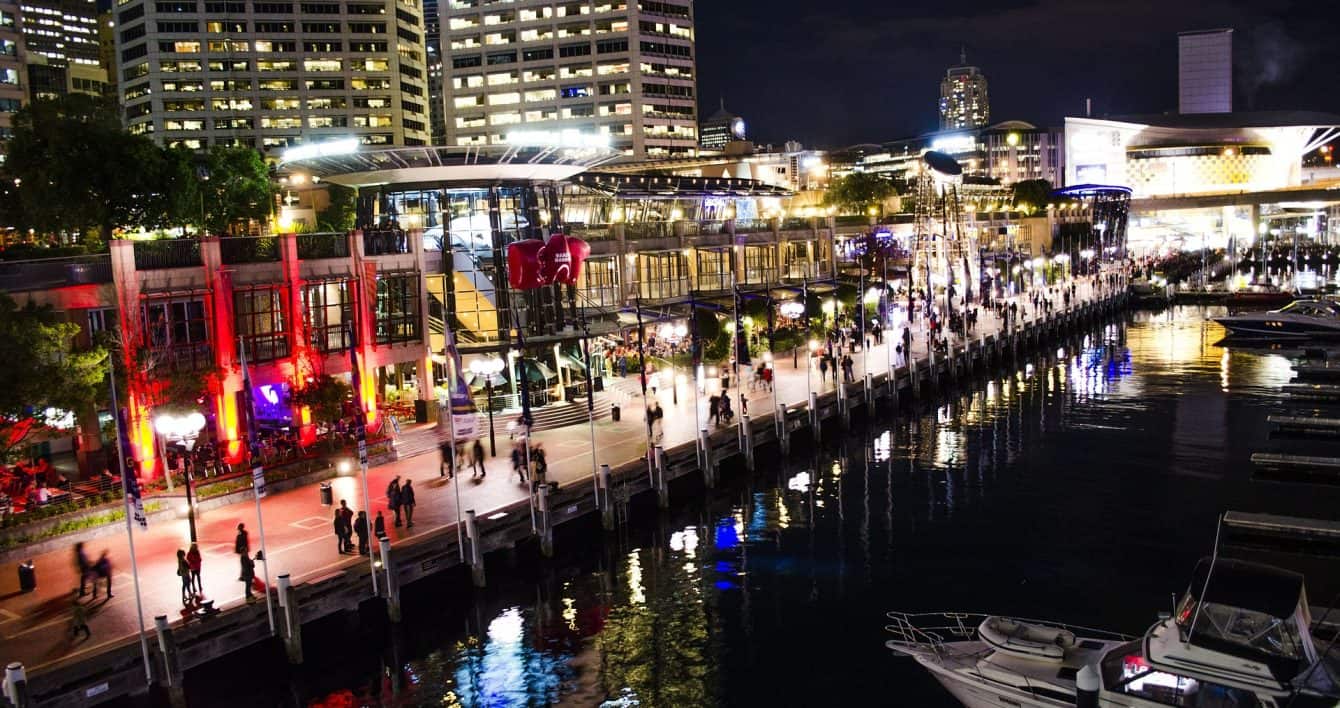Darling Harbour is now a glinting array of tourism attractions, events, and relaxed eateries drawing visitors and city locals alike, but this Sydney bay hasn’t always enjoyed such a refined or leisurely pace.
In fact the tourism icon has a complex history of trade, industry and indigenous culture that saw it as a centrepiece of Sydney’s history long before it was “returned to the people” and redeveloped in 1984.
Here’s an insight into Darling Harbour and why a fresh seafood lunch might just be the most fitting tribute…
Pre-colonisation
Even before colonisation, Darling Harbour was a lifeblood for the Aboriginal people of the area who used it to transport items up and down the Parramatta River. Known as Tumbalong, it was a place for fresh seafood, with the remnants of thousands of years’ worth of oyster shells lining the shores.
European arrival
When the first Australian convicts and settlers arrived, they took in the landscape and nicknamed it Cockle Bay. The formal name was long cove. The readily available seafood continued to appeal, with convicts and lime burners scouring the region for mussels and shellfish to eat and also use the shells as a source of lime for early building.
Darling Harbour
In 1826 the cove took on its name of Darling Harbour, after Governor Ralph Darling named the now thriving shopping port in his own name. It was a place of transport, where shipyards and vessels lined the shores amidst an increasing variety of factories and warehouses.
The industrial revolution
With its proximity to the waterfront, Darling Harbour was a centrepiece of change during the industrial revolution. The 1800s saw more factories, ships and warehouses added to the bustling region, with busy wharves supplying a growing country.
The official Darling Harbour website notes the region was the launching site for Australia’s first steam ship, and also the country’s first iron-hulled vessel.
“Other important firsts were the Australian Gas Light Company s gasworks, fired up on Queen Victoria s birthday in 1841, and, in the next decade, Zollner’s galvanising plant, an important innovation in a country that was to find more ways to use galvanised iron than any other,” they explain.
And still the industries continued to grow. Coal, wheat, wool and timber were among the cargo loaded and off-loaded at the wharves. The region was soon also serviced by part of Australia’s first railway line running from Central Station, with a major railway goods line established at nearby Ultimo.
An international slump
Until the Great Depression, Darling Harbour was a bustling hub of wharves, steam ships and wharehouses, but the financial chaos of the stock market crash saw casual labourers hit particularly hard.
“…the streets where they queued for the chance of a few hours of backbreaking work became known as the Hungry Mile,” Darling Harbour website adds.
World War II gave the region a boost but it wasn’t enough to halt the march to a new era where trade and industry had moved on and out of the city centre.
A new lease of life
With Australia’s bicentennial pending, and the country primed to celebrate, Darling Harbour was “returned to the people” in 1984.
The area was given a massive facelift with public spaces and welcoming attractions, and the precinct was formally opened by the Queen as part of Bicentennial celebrations on May 4, 1988.
Further attractions were added to its résumé, and Darling Harbour played a major role in the 2000 Olympics , hosting five sports events and opening its new King Street Wharf as part of the festivities.
Since then Darling Harbour has continued to evolve, with more and more attractions, events, and options added to its ever-burgeoning list of areas to explore.
About Georges
Situated on the King Street Wharf and overlooking all the action for which Darling Harbour is renowned, George’s Mediterranean Bar and Grill allows you to soak in the ambience and excitement of this truly cultural cove.
Join us to enjoy a seafood meal, a drink, and a well-earned relax as you ponder the Harbour that was home to indigenous culture, oysters, wharfies, steam ships and industry in a history that reflects Australia’s coming of age.
